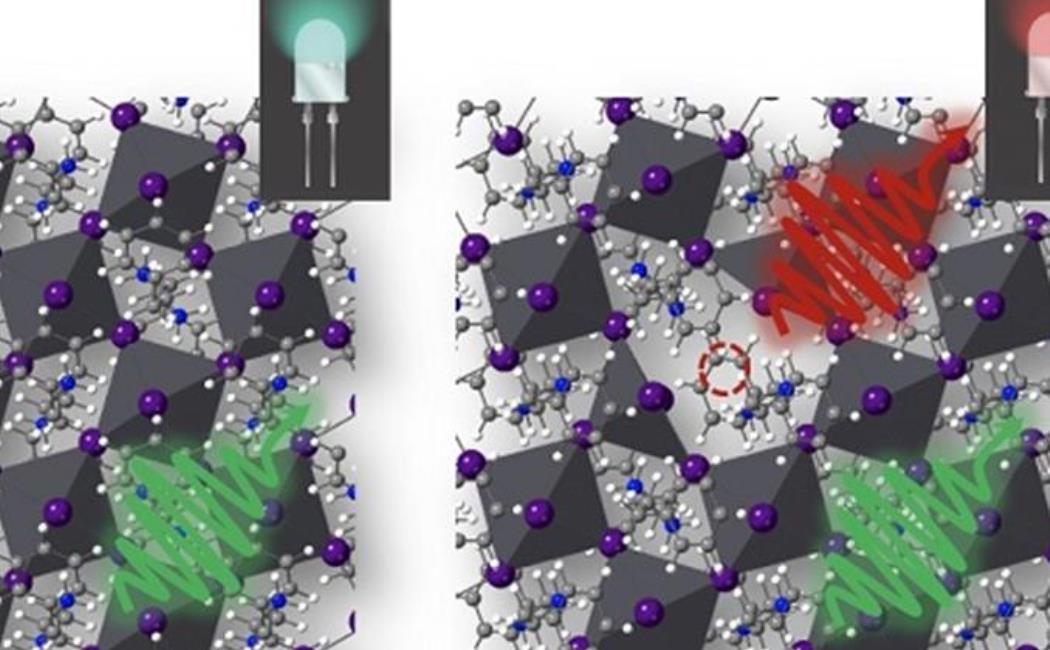Small flaws found within a new type of light-emitting diode (LED) crystal can play outsized roles in switching their output from white light to pure colors, a KAUST study has found.
Two-dimensional (2D) perovskites are hybrid inorganic/organic materials that can trap electrons inside their slab-like structures. Researchers have shown that by choosing organic layers with different sizes and insulating strengths, the confined electrons can stimulate emission of light in narrow spectral bands. This approach enables the fabrication of LEDs that emit high-purity colors with modest manufacturing costs.
Occasionally, however, the colors emanating from 2D perovskites become swamped behind a broad spectrum of white light. This competition between different light emissions has puzzled scientists: while some studies indicate it arises from photoinduced deformation of the layered structure, others argue that small crystal defects are to blame.
“It’s difficult to verify which of the proposed mechanisms is correct,” explains Jun Yin, a researcher in Omar Mohammed’s group. “Both produce similar photoluminescence features, and sometimes they can co-exist in the same crystal.”
Most LED crystals are produced through slow cooling processes, but the final structures of 2D perovskites depend on complex interactions between solvent molecules and precursor compounds. Yin, along with colleagues at KAUST and the University of Arizona in the United States, realized that this unique crystallization process could help them produce a critical piece of evidence—a perovskite without defects—needed to understand broadband emissions.
By targeting perovskites containing lead salts, the team used their chemical knowledge to create two kinds of 2D layers. Crystallizing the materials from a lead iodide precursor produced large anionic byproducts that reacted with the perovskite, leaving vacant sites in the lattice. However, when lead oxides were used to assemble perovskites with low defect levels, no such damaging anions were observed.
Luminescent measurement experiments confirmed that only the lead-oxide-based synthesis produced LEDs with narrow spectral light; the defect-ridden samples had cross-emission problems. Through computational screening of the possible types of defects, the researchers identified iodine vacancies as the prime origin of broadband light.
To verify their theoretical predictions, the researchers added an excess of iodine and organic ring components to a defect-filled sample and saw an immediate suppression of broadband emissions. “This finding provides physical insights into how to control the optical behaviors of 2D-perovskite structures,” says Mohammed, “and points the way toward next-generation LEDs with highly efficient narrowband emissions.”
-KAUST Discovery
